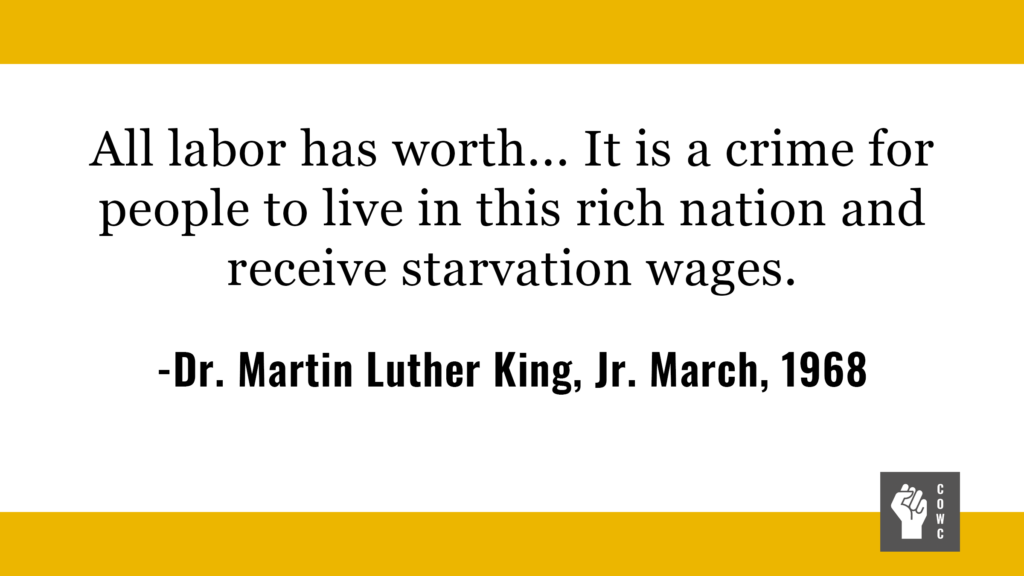
On August 30, 2019, the Ohio State University announced its plans to raise the minimum wage for most non-union and Wexner Medical Center employees to $15 an hour starting next year*. The salary increases will take effect when the University issues its annual merit-based pay raises in 2020.
The University says that the change will bring pay raises for about 3,800 employees. In addition, around 1,000 employees already making $15 an hour will receive raises that increase their wages to $16 an hour. The University states that the annual cost for raising the minimum wage is expected to be $19 million and will be funded through ongoing efficiency efforts the started back in 2015.
The University noted that a recent analysis of its economic impact showed that the University supports more than 123,000 jobs across Ohio, and that one in every 57 jobs in the state is directly or indirectly supported or sustained by the University. To see a large employer, like the Ohio State University, provide its workers wages that are appropriate for and livable in the local market economy is a positive development.
Congratulations to the affected employees and the Ohio State University for taking this much needed next step.
But the fight doesn’t stop here.
More employers need to commit to paying their workers a livable wage. Today, that means $15 an hour.
Ohio’s current minimum wage is $8.55 per hour, but that’s not enough for working families.
Many low-wage workers support children and some are the primary or sole income earners for their families. Yet despite working full-time and year-round, workers in Ohio are still living in poverty.
A full-time, year-round minimum wage worker with a family of three falls $3,500 short of the poverty level. Among Ohio’s ten most common occupations, six leave a full-time, year-round worker supporting a family of three dependent upon food aid. The city of Cleveland led the nation for 2017 in child poverty rates, with nearly half (49%) of the city’s children living in poverty. How can we expect families to get out of poverty if they aren’t able to make a livable wage?
Ohio can do better. Employers can lead the charge.
More than half of Ohio’s low-wage workers who would benefit from a $15 minimum wage work full-time. The median low-wage worker is 34 years old.
If the wage were increased to $15 by 2023, it would lift wages for nearly 2 million Ohio workers — 37% of the wage-earning workforce. Around 518,000 working parents would get a raise. An estimated 54% of black workers, 34% of white workers, and 54% of Latino/workers who self-identify as Hispanic would benefit from the wage increase. This includes 1.1 million working women and 917,000 working men.
All workers deserve a living wage.
If employers raise their base wages to $15 an hour, whether mandated or electing on their own to do so, low wage income Americans will benefit, which is good for our economy and good for our state.
But there’s certainly more to do.
The Central Ohio Worker Center fights for the issues that affect low wage workers and immigrants in our community.
If you believe that you have not been paid the minimum wage, that your wages have been improperly deducted, that you have not received proper overtime pay or pay for all hours worked, reach out to the Central Ohio Worker Center. The Central Ohio Worker Center is equipped to assist you by answering questions about your rights in the workplace and help you obtain the wages you are owed from your employer. Attend our upcoming wage theft clinic to speak with a volunteer.
If you are interested in volunteering with the Central Ohio Worker Center as a wage theft intake volunteer, please attend our upcoming wage theft clinic training. You do not need to be an attorney to volunteer as a wage theft intake volunteer, and volunteer capacities span from conducting intakes with affected workers, helping to market the wage theft clinics, and assisting to educate workers about their rights in the workplace. Speaking a language other than English is helpful but not required.
Finally, the Central Ohio Worker Center cannot sustain its programming without support from the community. Please consider making a tax-deductible donation to the Central Ohio Worker Center to support our worker education and wage theft programs. www.centralohioworkercenter.com/donate.
By: Sarah Ingles, COWC Board President
*Student workers are not necessarily included in the $15/hour wage. COWC believes that all workers, student or non-student, should make a living wage.
